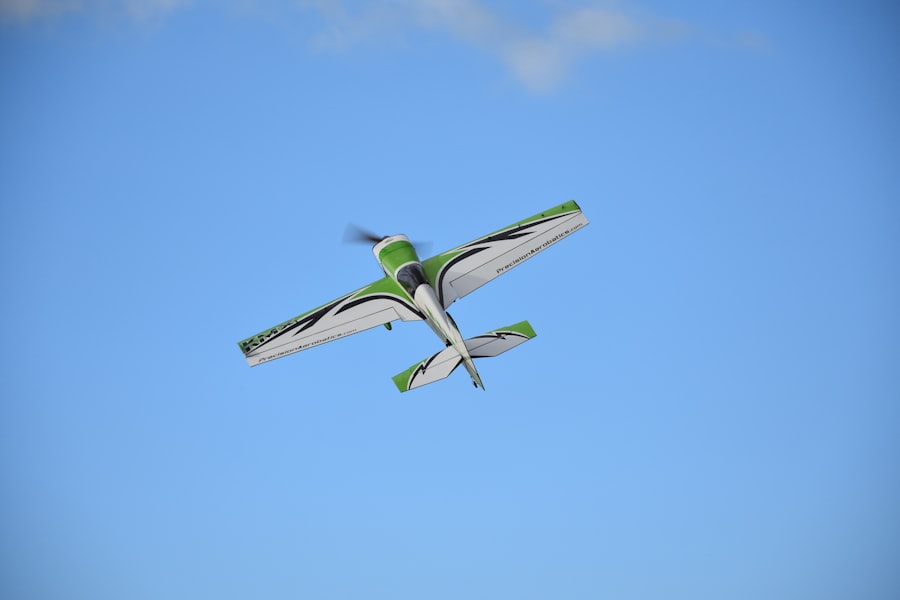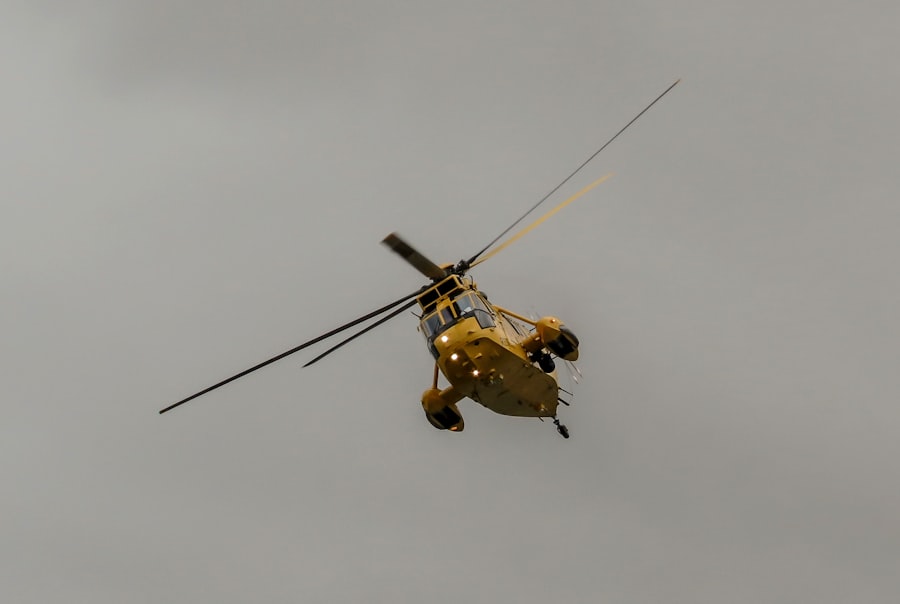The gyrocopter, also known as a gyroplane, has a rich history that dates back to the early 20th century. The concept of a rotorcraft that could take off and land vertically while maintaining the ability to fly forward was first explored by aviation pioneers such as Juan de la Cierva, a Spanish engineer. In 1923, de la Cierva successfully flew the first practical gyrocopter, the C.4, which utilized a free-spinning rotor system.
This design allowed the aircraft to achieve lift through autorotation, a principle that remains fundamental to gyrocopter operation today. De la Cierva’s innovations laid the groundwork for future developments in rotorcraft technology, and his work was instrumental in establishing the gyrocopter as a viable alternative to traditional fixed-wing aircraft. Throughout the decades, gyrocopters have evolved significantly, influenced by advancements in materials, aerodynamics, and engine technology.
During World War II, interest in gyrocopters surged due to their potential for reconnaissance and utility roles. However, it wasn’t until the 1950s and 1960s that gyrocopters began to gain popularity among civilian pilots. The introduction of more powerful engines and improved rotor designs made these aircraft more accessible and easier to fly.
By the late 20th century, gyrocopters had carved out a niche in the aviation world, appealing to recreational pilots and enthusiasts who sought a unique flying experience. Today, modern gyrocopters are celebrated for their versatility, efficiency, and the exhilarating sensation of flight they provide.
Key Takeaways
- Gyrocopters have a rich history dating back to the early 20th century, with significant advancements in design and technology over the years.
- Proper training and certification are essential for safely operating a gyrocopter, with specialized courses available for aspiring pilots.
- Understanding the mechanics of gyrocopters, including their unique rotor system and flight characteristics, is crucial for safe and efficient flying.
- Adhering to safety precautions and regulations, such as regular maintenance and airspace restrictions, is vital for a smooth and secure gyrocopter flying experience.
- Choosing the right gyrocopter for your needs involves considering factors such as seating capacity, fuel efficiency, and payload capacity, among others.
Getting Started: Training and Certification
Embarking on a journey to become a gyrocopter pilot requires dedication and a commitment to safety. The first step is to seek out a reputable flight school that offers specialized training in gyrocopter operations. Unlike traditional fixed-wing aircraft, gyrocopters have unique handling characteristics that necessitate tailored instruction.
Aspiring pilots should look for schools with experienced instructors who have a background in gyroplane flying. Many flight schools offer introductory flights, allowing potential students to experience the thrill of flying a gyrocopter before committing to a full training program. Training typically involves both ground school and flight instruction.
Ground school covers essential topics such as aerodynamics, navigation, meteorology, and regulations specific to gyroplanes. Flight instruction focuses on hands-on experience, teaching students how to operate the controls, manage autorotation, and execute various maneuvers safely. In many countries, obtaining a gyrocopter pilot’s license requires a minimum number of flight hours, including solo flight time.
Additionally, students must pass both a written exam and a practical flight test to demonstrate their proficiency. The certification process ensures that pilots are well-prepared to handle the unique challenges of flying a gyrocopter.
The Mechanics of Gyrocopters: How Do They Work?

Gyrocopters operate on principles distinct from those of fixed-wing aircraft and helicopters. At the heart of their design is the rotor system, which consists of one or more blades that rotate freely around a central hub. Unlike helicopters, where the rotor blades are powered by an engine during flight, gyrocopters rely on autorotation for lift.
This means that as the aircraft moves forward, air flows upward through the rotor blades, causing them to spin and generate lift. This unique mechanism allows gyrocopters to achieve stable flight at lower speeds compared to traditional airplanes. The engine in a gyrocopter typically drives a propeller located at the rear or front of the aircraft, providing thrust and enabling forward motion.
The combination of thrust from the propeller and lift from the rotor system allows gyrocopters to take off and land in shorter distances than conventional aircraft. Additionally, gyrocopters are known for their excellent maneuverability and stability in flight. The design of the rotor system allows for quick response to pilot inputs, making them ideal for low-speed operations and scenic flights.
Understanding these mechanics is crucial for pilots as they navigate the skies and make real-time decisions during flight.
Safety Precautions and Regulations for Gyrocopter Flying
| Regulation | Description |
|---|---|
| Flight Training | All gyrocopter pilots must undergo proper flight training and obtain a valid license before flying. |
| Pre-flight Inspection | Pilots must conduct a thorough pre-flight inspection of the gyrocopter to ensure it is in safe flying condition. |
| Weather Conditions | Pilots should always check weather conditions before flying and avoid flying in adverse weather. |
| Weight and Balance | It is important to adhere to weight and balance limitations to ensure safe flying performance. |
| Emergency Procedures | Pilots must be familiar with and trained in emergency procedures to handle unexpected situations. |
Safety is paramount in aviation, and flying a gyrocopter comes with its own set of challenges and risks that require careful consideration. Pilots must adhere to strict safety protocols to ensure their well-being and that of their passengers. Pre-flight checks are essential; pilots should inspect the aircraft thoroughly before each flight, examining critical components such as the rotor system, engine, fuel levels, and control surfaces.
Additionally, understanding weather conditions is vital; pilots should avoid flying in adverse weather or turbulent conditions that could compromise safety. Regulatory bodies around the world have established guidelines governing gyrocopter operations. In the United States, for example, the Federal Aviation Administration (FAA) has specific regulations regarding pilot certification, maintenance standards, and operational limitations for gyroplanes.
Pilots must stay informed about these regulations and ensure compliance at all times. Furthermore, many countries require pilots to undergo regular training and proficiency checks to maintain their licenses. By adhering to these regulations and prioritizing safety measures, pilots can enjoy the exhilarating experience of flying while minimizing risks.
Choosing the Right Gyrocopter for Your Needs
Selecting the right gyrocopter is a critical decision that depends on various factors including intended use, budget, and personal preferences. There are several models available on the market today, each designed with specific features that cater to different flying styles and purposes. For instance, some gyrocopters are optimized for recreational flying with comfortable seating arrangements and enhanced visibility for scenic tours.
Others may be designed for more utilitarian purposes such as agricultural applications or aerial photography. When considering a purchase, prospective buyers should evaluate their flying goals carefully. If one intends to use the gyrocopter primarily for leisure flights or sightseeing adventures, models with larger cabins and advanced avionics may be preferable.
Conversely, those interested in training or commercial applications might prioritize performance characteristics such as speed and payload capacity. Additionally, budget considerations play a significant role; new gyrocopters can be quite expensive while used models may offer more affordable options without sacrificing quality or safety features.
Exploring the World from Above: Popular Gyrocopter Destinations

One of the most exhilarating aspects of flying a gyrocopter is the opportunity to explore breathtaking landscapes from an aerial perspective. Numerous destinations around the globe are particularly well-suited for gyrocopter flights due to their stunning scenery and favorable flying conditions. For instance, the picturesque coastlines of California offer spectacular views of rugged cliffs meeting the Pacific Ocean, making it an ideal location for scenic flights.
Pilots can enjoy sweeping vistas while gliding effortlessly through the sky. In Europe, regions such as the Swiss Alps provide an unparalleled backdrop for gyrocopter enthusiasts. The majestic peaks and serene valleys create an awe-inspiring environment that is best appreciated from above.
Additionally, areas with diverse ecosystems like Florida’s Everglades offer unique opportunities for wildlife observation during flights. Many pilots also participate in organized fly-ins or events at popular destinations where they can connect with fellow enthusiasts while enjoying breathtaking views together.
Joining the Gyrocopter Community: Clubs and Events
Becoming part of the gyrocopter community can greatly enhance one’s flying experience by providing opportunities for networking, learning, and camaraderie among fellow enthusiasts. Numerous clubs exist worldwide dedicated specifically to gyroplane aviation; these organizations often host events such as fly-ins, workshops, and safety seminars aimed at fostering knowledge sharing among members. Joining such clubs not only allows pilots to connect with like-minded individuals but also provides access to valuable resources including training materials and maintenance tips.
Events like airshows or regional fly-ins serve as excellent platforms for pilots to showcase their skills while enjoying social interactions with others who share their passion for flying. These gatherings often feature demonstrations of advanced maneuvers performed by experienced pilots as well as opportunities for newcomers to learn from seasoned aviators. Engaging with the community can also lead to friendships that extend beyond aviation; many pilots form lasting bonds through shared experiences in the skies.
The Thrill of Flying: Experiencing the Freedom of Gyrocopter Aviation
The sensation of flying a gyrocopter is unlike any other form of aviation; it combines elements of freedom with an exhilarating sense of adventure. As pilots take off into the open sky, they experience an unparalleled connection with their surroundings—feeling every shift in wind currents while enjoying panoramic views that stretch for miles ahead. The unique design of gyrocopters allows for low-altitude flights that provide an intimate perspective on landscapes below; this immersive experience is often described as liberating.
Moreover, piloting a gyrocopter fosters a sense of empowerment as individuals gain confidence in their abilities to navigate through various conditions while mastering complex maneuvers. The thrill of soaring through the air while feeling completely in control creates an addictive allure that keeps many pilots returning to their craft time after time. Whether it’s exploring new destinations or simply enjoying leisurely flights over familiar terrain, the joy derived from flying a gyrocopter is truly unmatched—making it an appealing pursuit for aviation enthusiasts around the world.


